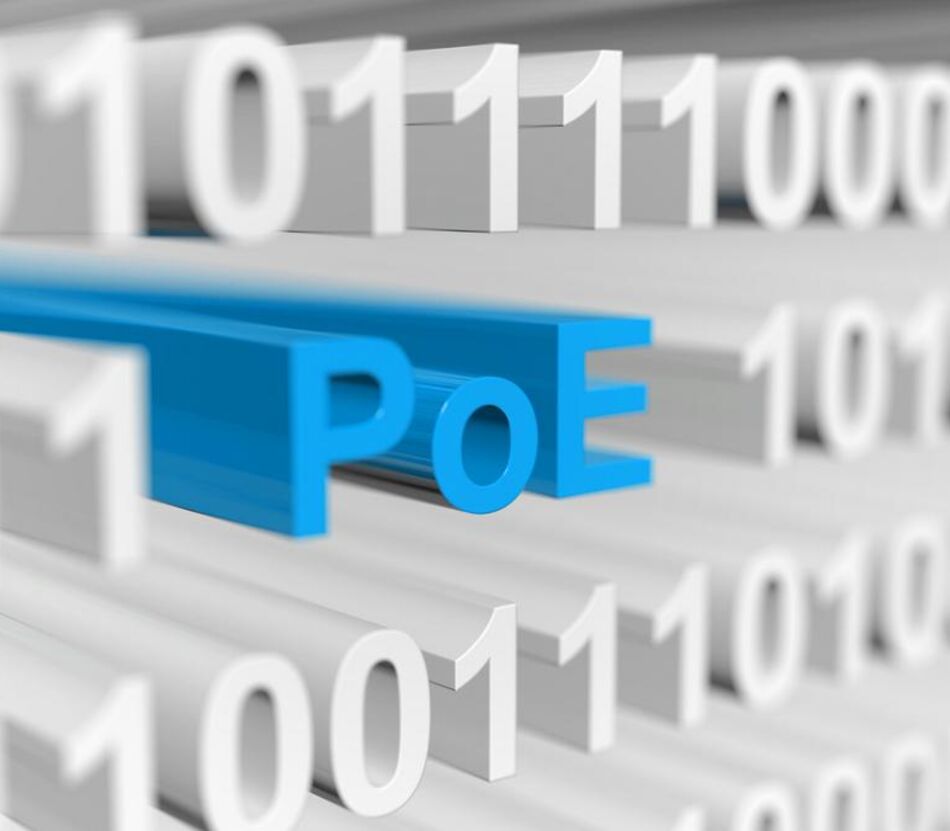Ethernet cables are increasingly being used not only to transfer data, but additionally also to supply power to connected devices. This technology is called Power over Ethernet – abbreviated PoE. The aim here is to present some of the technical conditions for facilitating optimum use of BizLink Ethernet cables.
The key advantage of PoE technology is that it dispenses with the need to lay a power supply cable alongside the Ethernet cable. Depending which cables and what devices are used, output of 15 W (PoE) or 30 W (PoE+) is possible via 4-pair data wiring; in the case of 4PPoE power supply of even up to 100 W (PoE++). This makes it easier to fit and run, for example, IP cameras, Bluetooth devices, IP phones, small servers or hubs.
Technical background:
The IEEE 802.3 standard is the basic document for using PoE. The IEEE 802.3af (PoE) standard permits power supply of Ethernet devices with output of 15 W via the data wiring. The permitted current is 175 mA per conductor (350 mA per pair). 2 conductor pairs of the 4-pair Ethernet cable are used for the outgoing and return feeds. In the case of the IEEE 802.3at (PoE+) standard, the output even comes to 30 W. The permitted current here is 300 mA per conductor (600 mA per pair). Likewise, 2 conductor pairs of the 4-pair Ethernet cable are used for the outgoing and return feeds. The IEEE 802.3bt (PoE++) standard is also described as four-pair Power-over-Ethernet (4PPoE). Whereas PoE hitherto used only two of the four core pairs of a data cable, this uses all 4 pairs to transmit power (two each for outgoing and return) of up to 100 W at a permissible current.
Installation of Ethernet cables:
Ethernet wiring was originally not devised for power transmission. That is why only the typical problems of data security, such as the radiation and interference of electromagnetic fields, had to be considered. In principle, laying cables in larger bundles was not a problem. When using PoE, however, other physical effects must be considered for installation and use of the Ethernet cables. Above all, these include:
• Heating of the individual data cable and of a data cable bundle
• Connector contact melting
Heating of the individual data cable:
PoE substantially increases the current carried via the electrical conductors and pairs and thereby the electrical output. Because of the electrical resistance of the conductors, this also increases the heat generated in the cable. This must be discharged by the electrical conductors. In the case of unshielded Ethernet cables, the heat thereby generated is higher by a factor of 5 over the structurally identical cable serves only to transfer data. Thanks to the better heat dissipation, shielded Ethernet cables only heat up by a factor of 2.5 to 3 above the electrical shield. Key determinants for cable heating are:
• Power load (depending on the PoE standard used)
• Conductor cross section
• Cable construction and choice of materials used
• Length of cable used
• Voltage used as well as voltage drop considered
Heating of the data cable bundle:
Alongside heating and heat dissipation of the individual Ethernet cable, the way the cable bundle is laid is also crucial because the heat dissipation of a cable bundle requires additional ratings. The draft standards ISO/IEC TR 29125 and Cenelec EN 50174-99-1 provide instruction on rating the specific thermal load in the cable bundle. In addition to the determinants already mentioned with respect to the individual cable, particularly the following must be considered in this case:
• Number of cables in the bundle
• Installation environment (heat dissipation)
• Ambient temperature
• Conditions for heat dissipation
For more detailed information click on:
